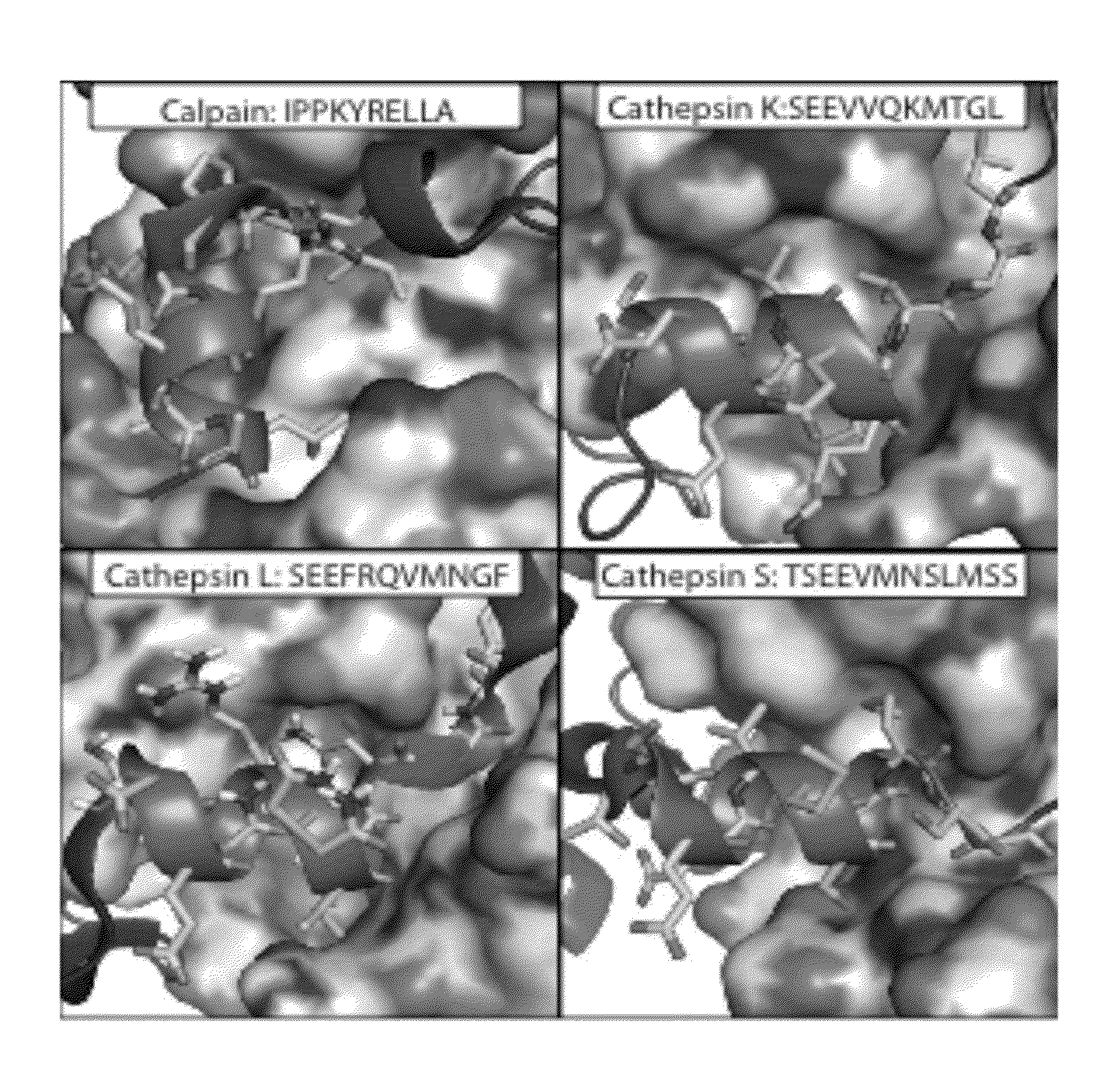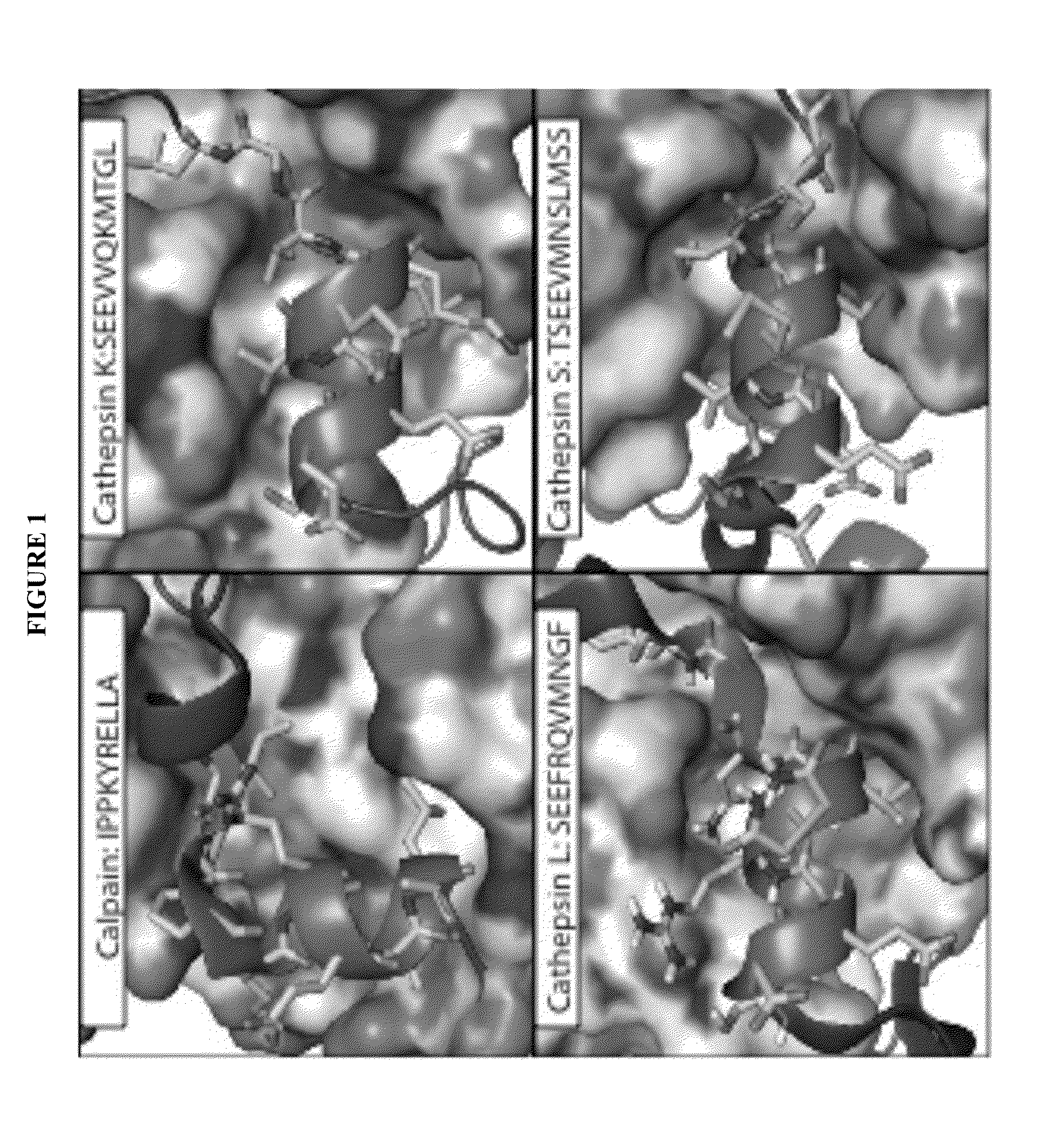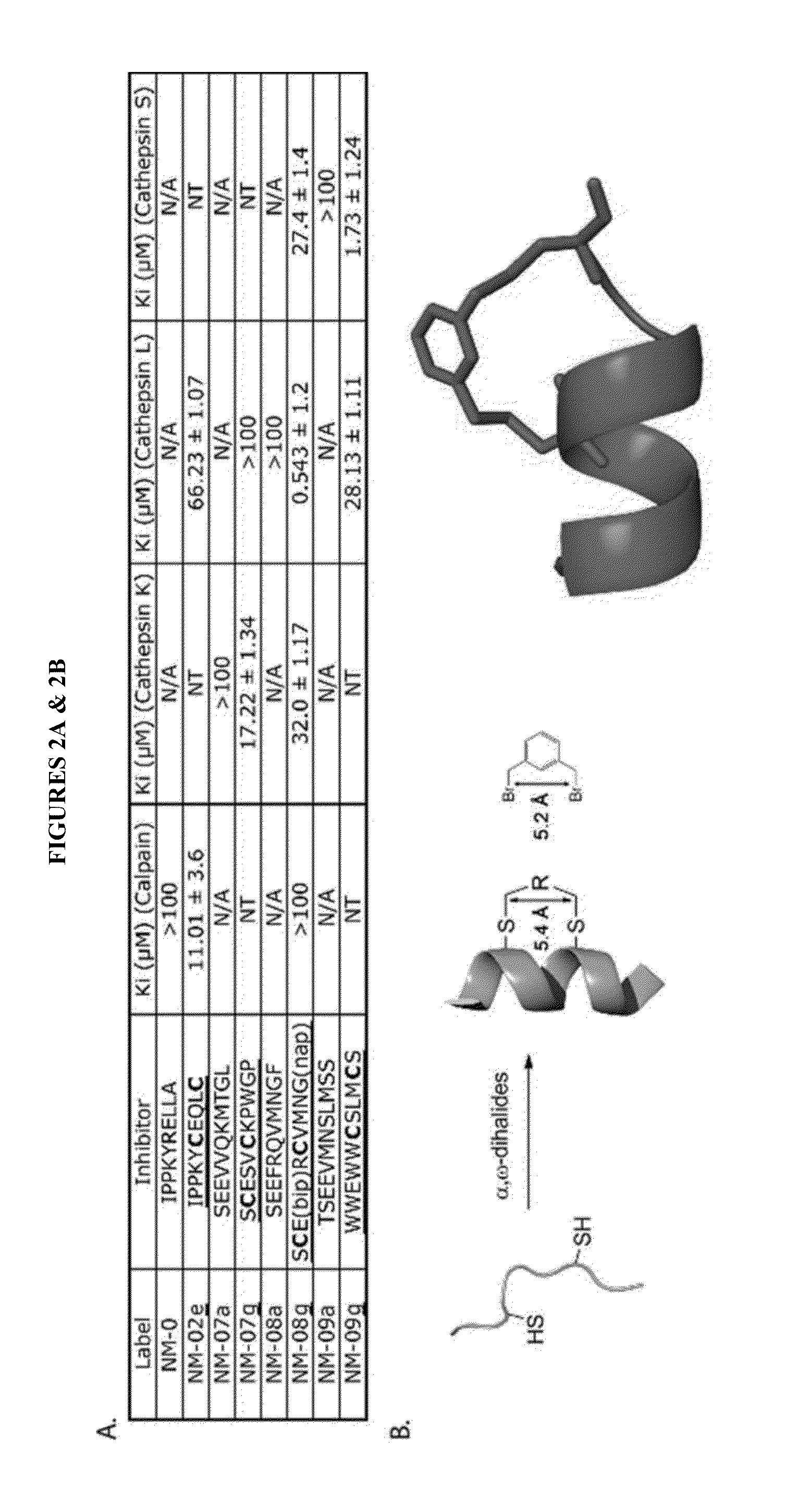Novel Alpha-Helical Peptidomimetic Inhibitors And Methods Using Same
a technology of peptidomimetic inhibitors and alpha-helical peptides, applied in the direction of drug compositions, coupling device connections, metabolism disorders, etc., can solve the problem that known inhibitors are not considered suitable for use as therapeutic agents in animals
- Summary
- Abstract
- Description
- Claims
- Application Information
AI Technical Summary
Benefits of technology
Problems solved by technology
Method used
Image
Examples
example 1
Identification Of Cysteine Inhibitors And Their Selectivity To Papain Family Proteases
[0164]All papain family proteases have a highly conserved active site cleft. The similarities of these active sites have made the development of specific inhibitors difficult. However, within the papain superfamily, the pro-domains of the cathepsins, and the endogenous inhibitor for Calpain-1 (Calpastatin) contain α-helices, which block the active site and prevent proteolytic cleavage (Hanna, et al., 2008, Nature 456:409-412; Podobnik, et al., 1997, J Mol Biol 271:774-788; Coulombe, et al., 1996, EMBO J 15:5492-5503; Kaulmann et al., 2006, Protein Sci 15:2619-2629), as illustrated in FIG. 1. As contemplated herein, using the natural a -helix alone provides a scaffold for a novel inhibitor class (and probes) that are specific for individual cathepsins and calpains. As demonstrated herein, the use of α-helical mimetics to differentiate amongst cysteine proteases is an unprecedented approach for the d...
example 2
Activity-Based Probes of Active Proteases
[0167]Activity-based probes (ABPs) are used to characterize families or individual active proteases within complex proteomes. ABPs typically possess two main structural components that contribute to their target specificity: (i) a mechanism-based inhibitor scaffold to covalently or non-covalently target catalytic residues or the active site of proteases; and (ii) a reporter tag, such as a fluorophore or biotin, for the visualization, characterization of labeling events, and eventual affinity purification of target proteins.
[0168]As contemplated herein, ABPs may be used for in vitro, in cell, and in vivo labeling of cysteine proteases. For example, FIG. 3 illustrates one series of probes for calpains. These probes are comprised of a stabilized α-helix as a specificity element with an epoxysuccinic acid as an electrophilic “warhead” that irreversibly reacts with the active site cysteine, and a biotin, FITC, TAMRA, or BODIPY tag as reporters. To...
PUM
| Property | Measurement | Unit |
|---|---|---|
| pH | aaaaa | aaaaa |
| w/w | aaaaa | aaaaa |
| temperature | aaaaa | aaaaa |
Abstract
Description
Claims
Application Information
 Login to View More
Login to View More - R&D
- Intellectual Property
- Life Sciences
- Materials
- Tech Scout
- Unparalleled Data Quality
- Higher Quality Content
- 60% Fewer Hallucinations
Browse by: Latest US Patents, China's latest patents, Technical Efficacy Thesaurus, Application Domain, Technology Topic, Popular Technical Reports.
© 2025 PatSnap. All rights reserved.Legal|Privacy policy|Modern Slavery Act Transparency Statement|Sitemap|About US| Contact US: help@patsnap.com



